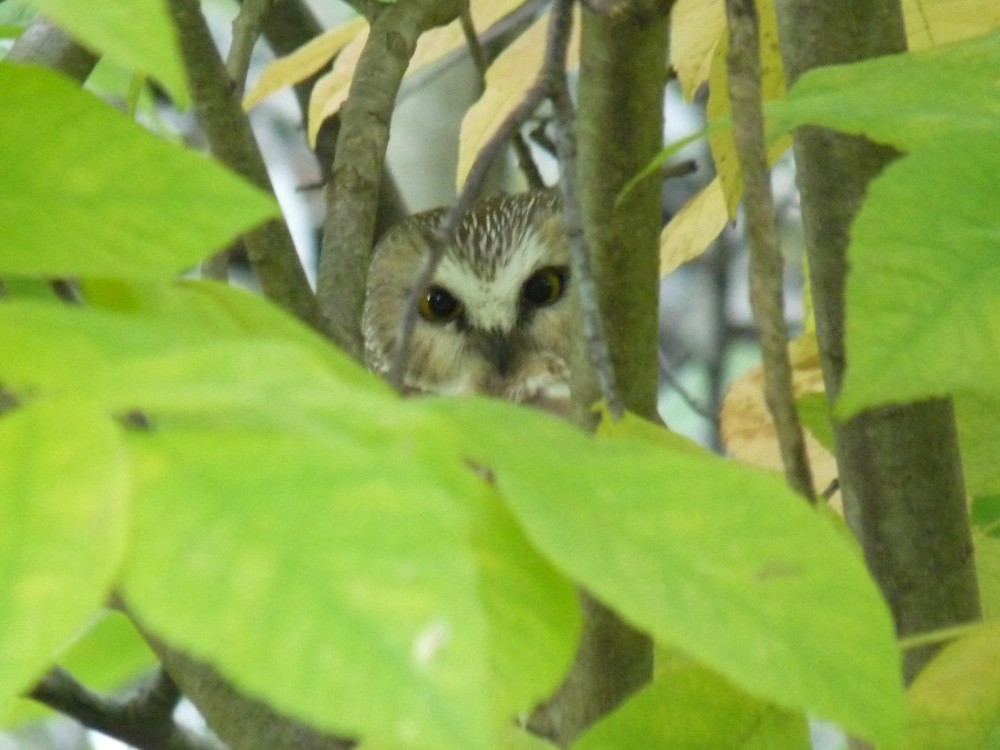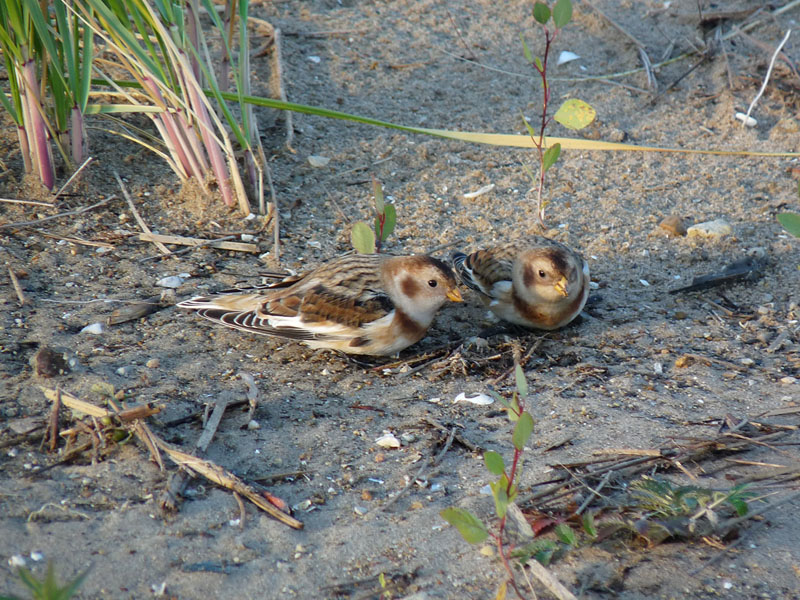November is known for rare waterbirds but it’s also excellent for owls. Long-eared, Short-eared, Snowy, and Northern Saw-whet Owls have been reported at Montrose as of November 12. So, while you’re dreaming about alcids and waiting for a Black-legged Kittiwake to fly by, don’t forget to check the Dunes, woods, and shrubs for owls. Look for whitewash, listen for complaining songbirds, and scan open areas for round white lumps.
Tag Archives: Northern Saw-whet Owl
Northern Saw-whet Owl, October 20, 2022
There isn’t a much more rewarding experience than finding a roosting Northern Saw-whet Owl during migration. This one was as fascinated with me as I was with it. Shoutout to the Northern Cardinal and Black-capped Chickadees for getting me on it. The secret to discovery in nature is awareness of the signs, cues, and messages it presents.
Tip: Listen for scolding Black-capped Chickadees and other small songbirds. They’re good at locating roosting owls in dense vegetation. If you hear complaining songbirds, look around and you might find a Saw-whet.
Note: Disclosing the exact location of a roosting owl is frowned upon in the birding community. Doing so could lead to harassment of the owl by birders and photographers. Giving the general location is acceptable, but if you find a roosting owl you should keep the precise location to yourself.
November Cometh
November is one of the most exciting months of the year at Montrose. The list of rarities found there in November is long and distinguished. As examples, an Ancient Murrelet, just the fourth record for Illinois, made an appearance in 2019, and in 2020 the fourth state record Cassin’s Sparrow delighted birders. General birding can be good too. Here are a few November birding tips:
- Check the beach and Dunes for Lapland Longspurs and Snow Buntings. The buntings favor the more open areas of the Dunes, and the longspurs are usually flying over. Both will sometimes feed out in the open on the beach or even in the algae that washes up on the beach.
- On days with brisk west winds, Short-eared Owls are a good bet in the Dunes. They usually kick up out of the denser vegetation and fly out over Lake Michigan.
- With a little effort and luck, Northern Saw-whet and Long-eared Owls can be found in the peripheral plantings. Look for whitewash and listen for scolding, excited Black-capped Chickadees.
- The fishing pier is an excellent place to scan Lake Michigan for loons, grebes, and waterfowl, either resting on the surface or in flight. Overcast days with light winds offer the best viewing conditions.
- Northern Shrikes like the Dunes and more open areas of the Point. Look for them perched in the tops of trees or flying through, flashing their white wing and tail spots.
- Black-legged Kittiwakes sometimes turn up, especially on days with northeast winds. They aren’t a sure bet but if you’re at Montrose on a day with easterly winds, pay attention to the gulls flying by. This applies for jaegers too.
See the Montrose Glossary page for descriptions of the locations mentioned above.
December 8, 2020 – A Two Owl Day
I tallied only 22 species on December 8 but two of those 22 were owls. Seeing more than one owl in a day at Montrose is unusual. A Great Horned Owl was flying around the Point trying to find a place to take a break but a Cooper’s Hawk had other ideas and harassed it relentlessly. When the Cooper’s Hawk gave up and moved on, a gang of American Crows found the owl and picked up where the hawk left off. The besieged owl kept moving around, trying to lose the crows and find a quiet place to rest. Montrose has little in the way of habitat where a large owl can hide. Throw in some American Crows and you’ve got an unhappy situation. The crows were still yammering at the Great Horned when I left.
The other owl was a Northern Saw-whet. This bird was in the same area as last winter’s Saw-whet and may be the same individual. The best way to find a Saw-whet is to listen for complaining Black-capped Chickadees and to look for whitewash (owl poop) in roosting habitat like dense stands of conifers. Link to myeBird checklist for the morning below.
eBird Checklist
December 8, 2020
Northern Saw-whet Owl, November 13, 2019
Finding a roosting Northern Saw-whet Owl is a rewarding experience for a birder. The resident gang of Black-capped Chickadees located this half-asleep Saw-whet for me; without their scolding, I would have walked right by it. Northern Saw-whet Owls aren’t rare but can be hard to find due to their small size, retiring habits, and tendency to roost in dense vegetation during migration. The lesson here is this: if you hear complaining chickadees, pay attention and see what they have. There might be a pleasant surprise waiting for you. Link to my eBird checklist for the day below.
eBird Checklist
November 13, 2019




